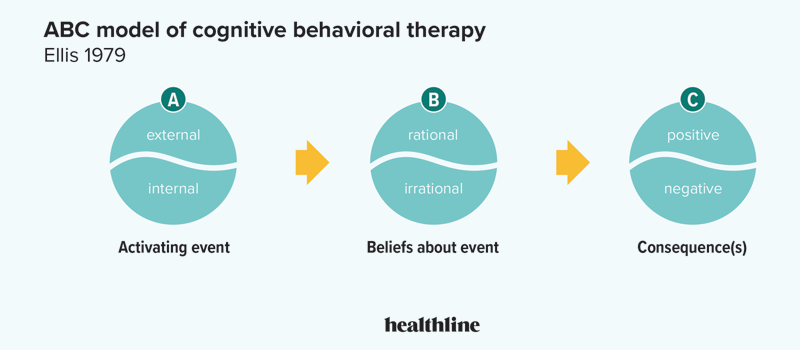When working in the day-to-day shuffle of our industry, we tend to lose control over our ability to think more flexibly and accurately. Let’s face it, by the time it is 2 p.m., you have already had three things pop up, four team members who need your time, and you are supposed to be out the door at 4:30 p.m. Sometimes our brains are put on overload, and we lose sight of flexible and accurate thinking.

Lucky for you, I have a few tips to help get you started. First, recognize the five thinking traps, second, reflect on a situation using the Cognitive ABC model (Figure 1), and third, learn to develop an agile mind and to focus on accuracy. Using these tools will help assist in having a more flexible and accurate thinking process that can help you in your everyday life.
Thinking traps
Thinking traps are essentially a negative reasoning pattern. The main ones are all or nothing, blame them, negative brain filter, overgeneralizing, and catastrophizing.
1) All or nothing. This is thinking the outcome will either be really good or really bad, and the person will not see the in-between possibilities. An example would be if your friend got mad at you, and you immediately thought nobody likes you and you are unlovable.
2) The blaming thinking trap. This is immediately jumping into conclusions and blaming somebody else even without being totally sure they actually did something wrong.
3) Negative brain filter. This is focusing on the negative without seeing any of the positive.
4) Overgeneralization. This is a big one in the veterinary industry, in my opinion, and happens when someone makes sweeping judgements about themselves or others based on one or two experiences. How many times have you overheard this happen about a client possibly not being able to afford treatment for their sick puppy before the estimate was even presented? It should not happen, but we all do it!
5) Catastrophizing. This is always imaging the worst-case scenario, no matter how likely or unlikely it is to happen. A good example is a work that got added to the schedule and a technician came panicking that she will be homeless if she does not get out on time today.
The most important part to these thinking traps is listening throughout your daily workflow and recognizing situations that occur where they are relatable. You can then use the Cognitive ABC model to reflect on the event and build awareness to try to improve next time.
The Cognitive ABC model
The Cognitive ABC model was created by Dr. Albert Ellis, and it is a framework that assumes your beliefs about a specific event and how you react to that event. Using this model can help benefit your mental and emotional functioning. It helps you identify the inaccurate beliefs and consider whether they are true or not, which improves how you react in the long run.
Here is an example. Let us say I discovered a team member was not pulling their weight, which caused strain on other team members. It had been a long day, so I responded with, “Why can’t you just do your job?!” I could use the ABC model to look back and reflect on the situation. Let us break this event down: The Adversity or activating event was me upset because something done incorrectly or incompletely. The Beliefs would be my heat-of-the-moment thought, “Why can’t you just do your job?” because I believed the employee was slacking off; and the Consequence would be that team member possibly losing respect for me as a manager, or even quitting.
Hopefully, you do not encounter such an event. Next time you have a negative interaction with someone, stop and take a minute to reflect and understand not only how you may have felt in the moment, but how the other person felt after receiving that response. As you become more self-aware, you learn to understand other people’s beliefs and how they are reacting, which then opens up to flexible and accurate thinking—you’re diving in and being able to understand the situation from all points of view.
The other ABCs
A = Adversity or Activating event.
B = Beliefs about the event or your heat-of-the-moment thought.
C = Consequence or the result of A and B.

Courtesy https://www.healthline.com/health/abc-model
Focus on accuracy
Patients depend on us every day to take care of them. When it comes to records within the hospital, as a practice manager, I try to make sure all I’s are dotted and T’s crossed. Afterall, if your client ends up moving a few years later and changing vets it would be embarrassing to send the new clinic incomplete records. Accuracy is so important, so we must work on ourselves every day to try to improve and become a better advocate for our patients.
A great way I have found that helps with this is taking a walk or meditating to clear my head prior to making important decisions. Those five to 10 minutes out of the practice helps center me and be able to think more clearly in making a better educated decision versus supplying an answer on the spot. You can also practice the things you are good at, but next time try timing yourself. For example, I know I’m good at ordering, receiving, and budgeting. Suppose it usually takes me an hour to do all those. The next time I go do it, I will challenge myself to have it done in 45 minutes while remaining accurate and so on.
Another trick I learned was to stop multitasking. Yes, I said it: Stop multitasking! Getting in the habit of doing one task at a time helps with performance and accuracy because you are giving that one task your undivided attention. It is also key to learning and remembering information. Once you stop multitasking, you can focus on doing things faster by challenging yourself. Another big factor is continuing to learn every day. Our world is changing daily, and it is our duty to stay current and accurate for our teams. It is important to participate in continuing education to stay up-to-date and help you guide your staff in any new directions.
This may have seemed like information overload, but if you take each situation step by step it will break it down to be more manageable. Ultimately. you must first recognize the thinking trap, then use the ABC model to reflect on this event, and finally challenge yourself to focus on accuracy. In the end, you must do whatever is best for you! In this industry, you must always continue to grow and expand your experiences to be able to provide even better service for clients, and better management in your team. Flexible and accurate thinking is easily achievable or easy to improve on if you practice it every day.
Rachel Singletary is a practice manager in Lakeland, Fla., who has started from the bottom and moved her way up throughout the years. She has managed many different areas of veterinary hospitals and her top passion is inventory, staff development, and budgeting. Client satisfaction, growth and inventory are also major factors in her daily life because she strives to provide a positive experience for both her clients and staff every day.
